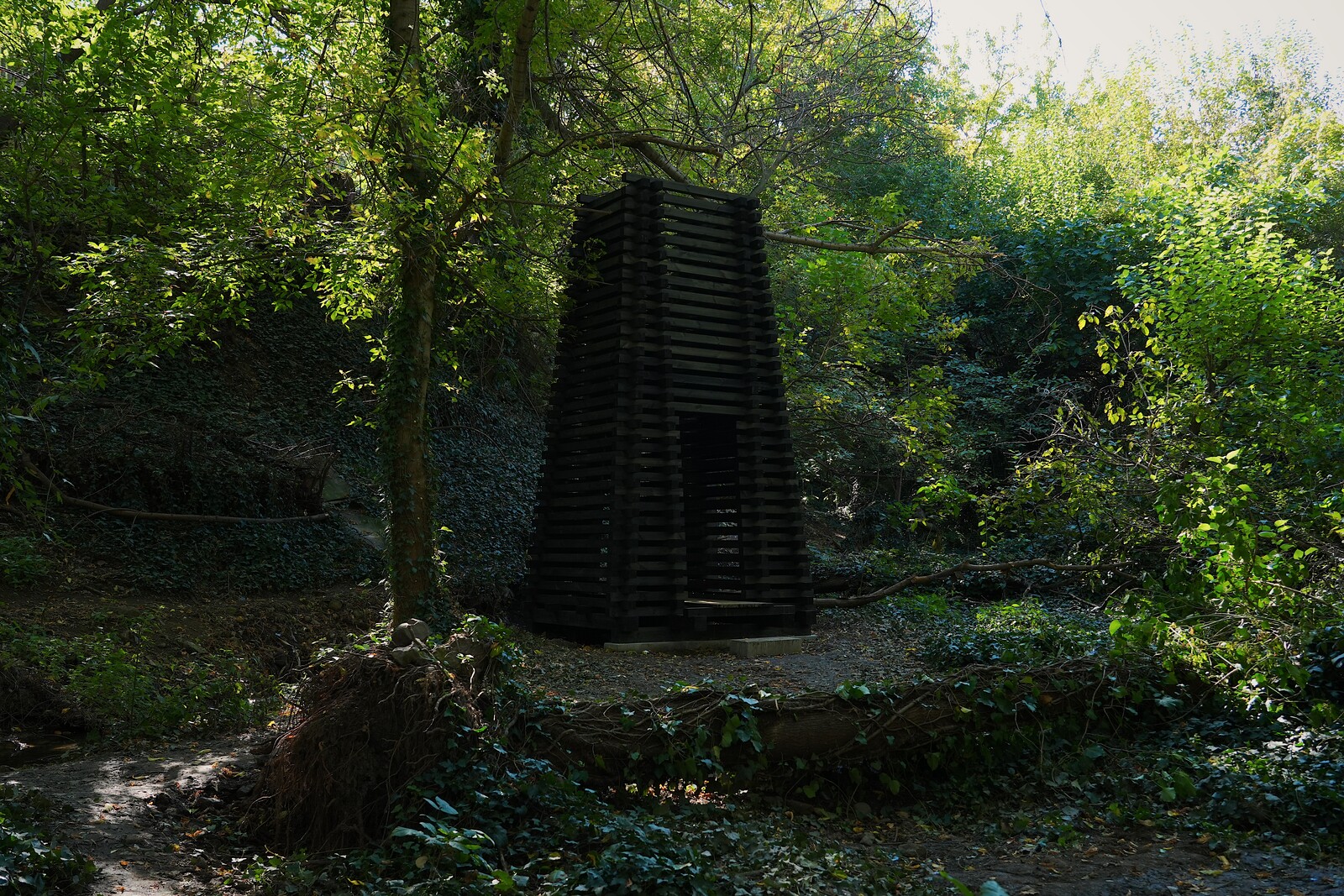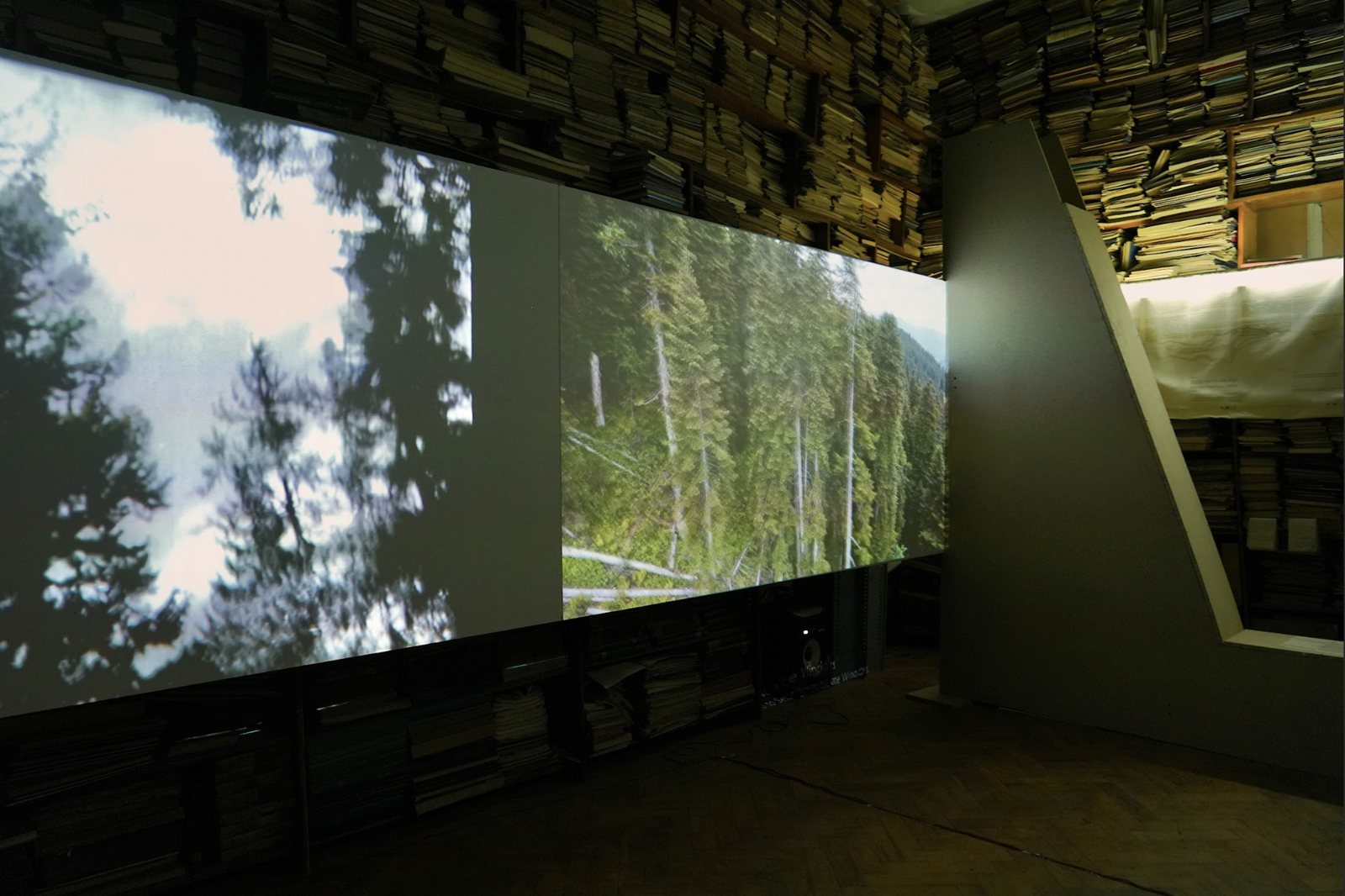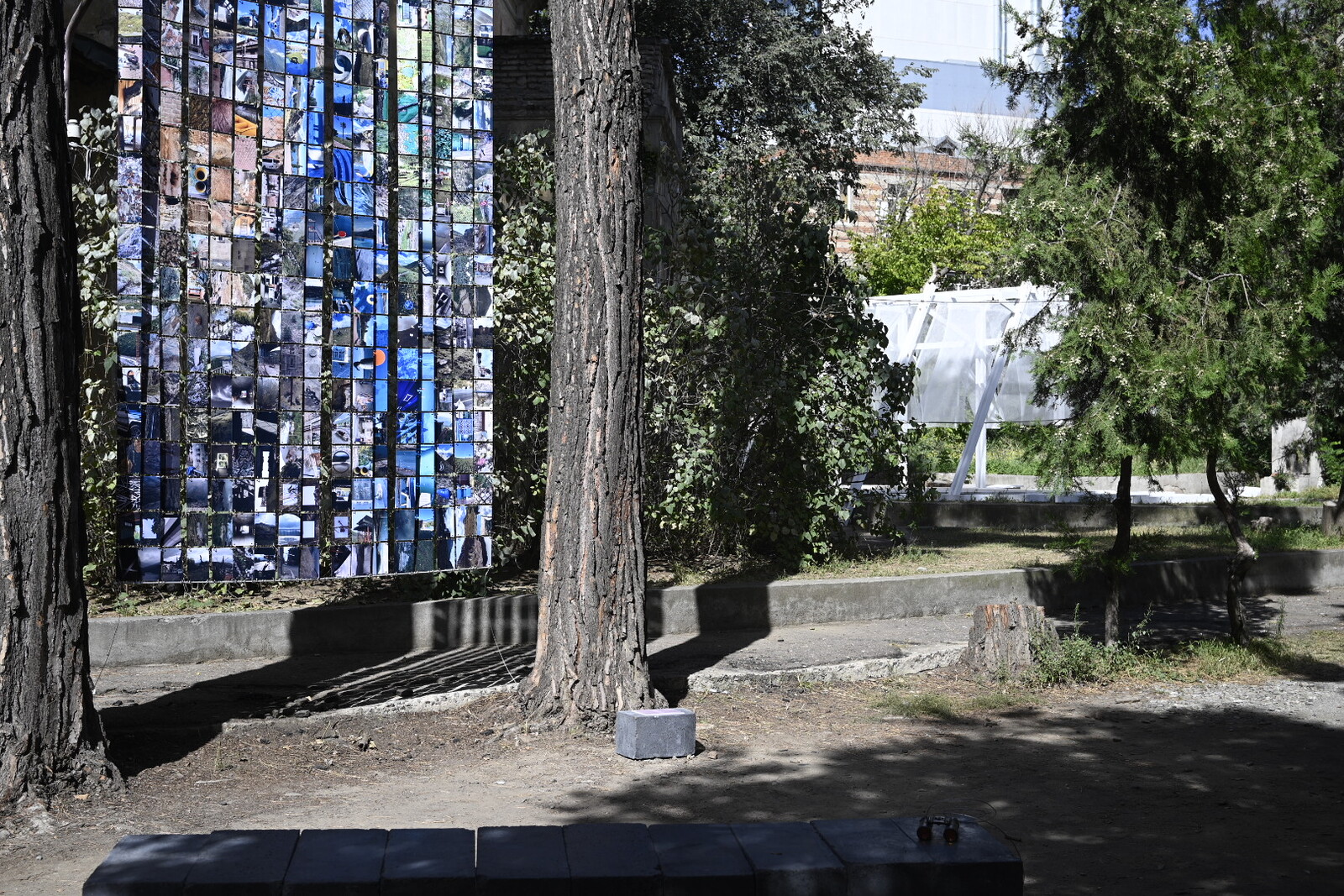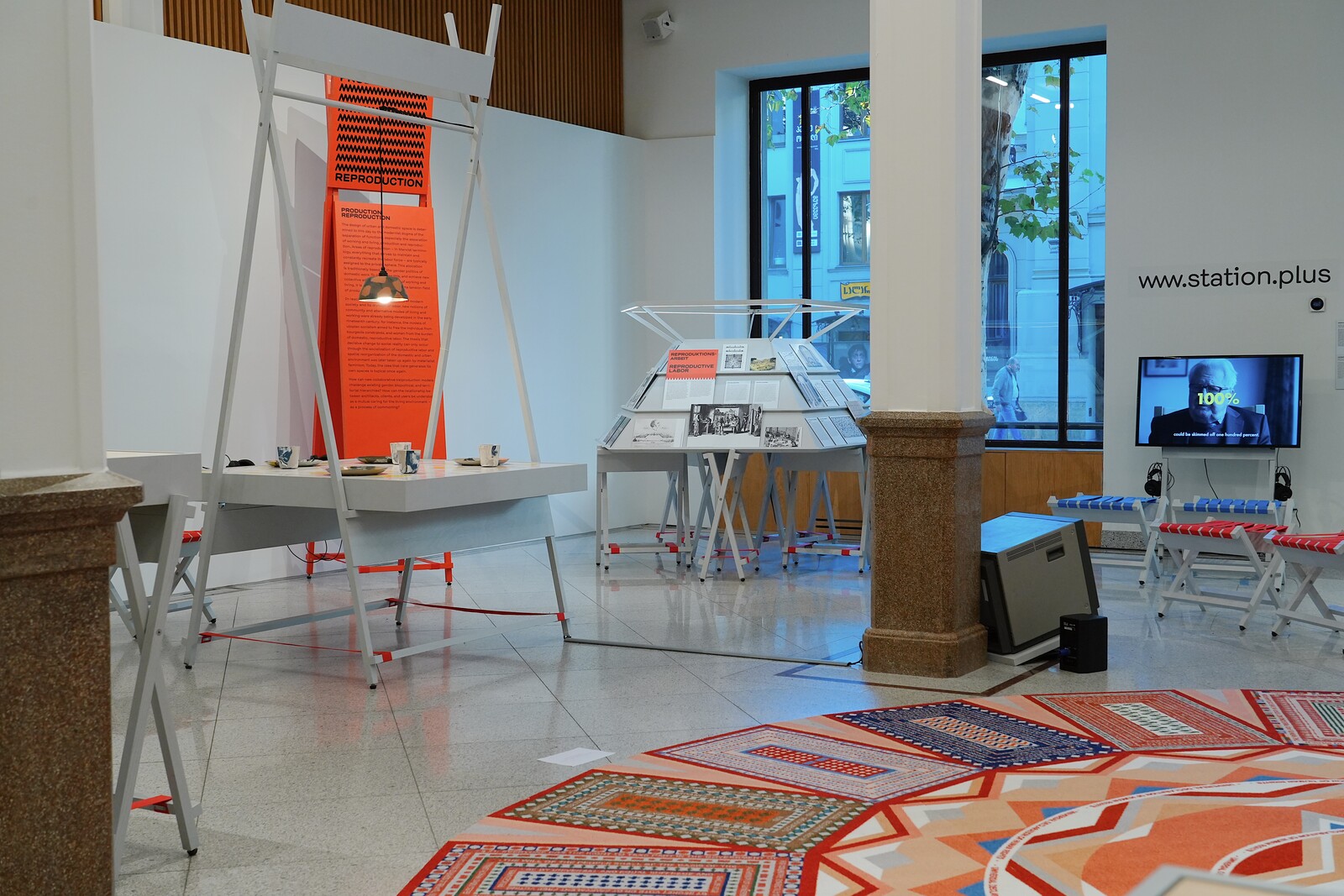September 28–October 19, 2024
Barely twenty-four hours after it was declared that Georgia’s parliamentary elections had been won by Georgian Dream—a party founded by a pro-Russian billionaire—the country’s president, Salome Zourabichvili, denounced a “total falsification” of the vote and called on her fellow citizens to protest. It feels apt, therefore, that artistic directors Tinatin Gurgenidze, Otar Nemsadze, and Gigi Shukakidze should have chosen the theme of “Correct Mistakes” for the fourth Tbilisi Architecture Biennial, with its multiple meanings, from useful errors to their possible rectification. This edition focuses on the seizure of natural resources, landscapes exploited for profit, forgotten ecological histories and—more generally, as the biennial’s statement puts it—the “disregard for climate change.” Their radical, resolutely provocative approach points to the urgent role and responsibility of architects, urban actors, and activists in preserving the commons.
The biennial unfolds as a vibrant, multifaceted structure: exhibitions, screenings, workshops, symposia, off-the-beaten-track site visits, and “toxic tours” of polluted and damaged places in different parts of the city. The selected projects thus provide multiple access points to the complex connections between climate, resources, their extraction and appropriation, starting from Georgia but not restricted to it. National borders are never directly invoked. Rather, it is a matter of the Caucasus, its bioregions, and their watersheds from the glaciers to the Black Sea—on the far side of which is Ukraine, with which the biennial has already established many alliances.
The biennial’s first symposium featured three brilliant papers on “Nature as Weapon” in Ukraine by Lina Bondarenko, Iryna Zamuruieva, and Yuliia Holiuk of the METALAB non-profit organization, moderated by the METASITU visual arts and urbanism collective. Also shown was The River Wailed Like a Wounded Beast (2023), a video installation made with the Ukraine War Archive, an earlier version of which (curated by Stanislav Bytiutskyi, Alona Penzii, and Oleksandr Teliuk) appeared in last year’s Kyiv Biennale. The work is dedicated to the construction and destruction of the Kakhovka hydroelectric reservoir on the Dnipro river, an energy-producing infrastructure destroyed by Russian troops in June 2023, resulting in the flooding of several villages and three nature reserves on the Ukrainian steppe.
The main exhibition, the curatorial team for which is led by Shukakidze, is housed in part of the Hydrometeorological Institute, the oldest scientific institution in the Caucasus. This listed meteorological observatory—built in 1861 and tucked away behind the Ministry of the Army—is known for pioneering cloud seeding, a controversial weather-modification technique used in agricultural production. Preserved in its original state, the building’s interior and garden surround the biennial’s installations with books, archival documents, photographs, plans, and incongruous objects. Among these are the rockets sent into the clouds to induce rain, which look more like instruments of war than meteorological tools.
If environmental damage does not stop at a line drawn on a map, and climate change knows no boundaries, how to understand borders in a country with around twenty per cent of its territory under Russian military occupation?1 Where the threat of further incursions remains, especially since the invasion of Ukraine? The notion of mistake that runs through the biennial also addresses the legacy of the Soviet era and what is to be done with that heritage. In this biennial, such questions inhere in water, soil, and atmosphere—what Bruno Latour calls the “critical zone.”
A large part of the extensive program was selected through an international open competition. As a result, much space is devoted to fieldwork and situated research. The Swiss collective la-clique presents Double Exposure (2024), an installation conceived with students during a week-long workshop on the geographical similarities between Georgia and Switzerland, particularly as glaciers are common to both countries. Another example is Common Water Bodies (2024), resulting from a summer school under the guidance of the Spolka collective and architect Rachel Rouzaud, who has made carpet-map designs her specialty.2 Here, the river, the delta, and the city of Anaklia, located at the mouth of the Ingouri River on the Black Sea, are mapped on carpets, yet with a weaving technique that renders the boundaries blurry.
But two key works in particular seem to structure the exhibition and the biennial: a film and an installation. Tekla Aslanishvili’s masterful film The Mountain Speaks to the Sea is part of a glossary and architectural installation entitled Unmapping Energy Geographies (both 2024), conceived with Alexandra Aroshvili, Evelina Gambino, and Natalia Nebieridze. The split-screen film reveals two facets of the stories of interdependence between the glacier and the Black Sea to which it leads. The narrative is based on contemporary and historical images, living archives of this coveted energy-producing water resource. The focal point of the film—and perhaps the key to the biennial as a whole—becomes clear when the film uncovers a project that could change the fate of the region. This gigantic infrastructure, the Black Sea Submarine Cable, will on completion be the world’s longest high-voltage power grid. It has a strategic goal: to reduce Europe’s dependence on Russia for both energy and data transmission.
Landscape fragments (2024), a linear installation in the garden of the Hydrometeorological Station, conceived by Shukakidze and his students from the School of Visual Art and Design (VA[A]DS) at the Free University of Tbilisi, also draws on multiple sources. On a huge brick table made from black mud taken from the Zhinvali reservoir, and which was first shown in the Georgian pavilion at the 18th Venice Architecture Biennale, the group set out to document the contemporary history of ecocide in Georgia. Numerous photographs, press clippings, videos, textual reports, and quotations document the fragmented history of the water cycle and related ecosystems. Behind the dominant official narrative are fragmentary micro-histories that reveal a dark reality, as the landscapes of the country become more and more abstract—unprotected, seized, and transformed.
On the opening weekend of the biennial, after an opening lecture by Philippe Rahm, an architect specializing in “meteorological architecture,” the symposium brought together researchers to discuss the “Extraction and Depletion of Soil in Georgia.” In a moving demonstration, activist Alexandra Aroshvili described the situation in the village of Shukruti. For several years, the Chiatura Management Company, based in the neighboring village, has accelerated its manganese mining operations, resulting in the collapse of numerous buildings. Describing this area as a “sacrifice zone,” Arosvhili demonstrated the link between social and ecological injustice.
This was made concrete during the biennial itself, when nine Shukruti residents went on hunger strike in front of the Georgian parliament to protest the destruction of their habitat. As a part of the program, journalist and photographer Sopho Aptsiauri led a visit to the village. Two days later—after forty-three days without food, during which some members of the group had sewn their mouths shut—the protesters agreed to end their hunger strike and enter into negotiations with the Chiatura Management Company. Two weeks of fruitless talks followed. With parliamentary elections approaching, the strikers finally ended their protest in the capital city, vowing to continue their struggle despite having made no progress.3
This edition of the Tbilisi Architecture Biennial makes strong connections with what French philosophers Emmanuel Bonnet, Diego Landivar, and Alexandre Monnin call the “negative commons.”4 In contrast to the “commons,” which usually refers to shared resources with positive effects, the “negative commons” include those that have negative impacts but which must also be taken care of, such as waste and nuclear power plants. The idea foregrounds the interdependent nature of our environments and the multiple actors implicated in our common heritage. Far from pointing out guilty parties for past errors, “Correct mistakes” proposes embracing those same mistakes as a kind of negative commons—shared by a community, a country, a continent, and finally the planet as a whole. This biennial is anchored in history, but even more so in the future. It’s not too late to change the course of our common mistakes.
Natalia Antelava, “In Georgia, Russia has just scored another victory against liberal democracy,” The Guardian (October 28, 2024), https://www.theguardian.com/commentisfree/2024/oct/28/georgia-russia-democracy-kremlin-election.
Tinatin Gurgenidze and Lado Shonia were the main organizers, and Nikoloz Kvatchrelishvili project assistant.
See Mariam Nikuradze, “Shukrutians end hunger strike in Tbilisi after mining company agrees to negotiations,” OC Media (October 14, 2024), https://oc-media.org/shukrutians-end-hunger-strike-in-tbilisi-after-mining-company-agrees-to-negotiations/ and OC Media Instagram Reels post (October 24, 204), https://www.instagram.com/reel/DBg0psGv707/?utm_source=ig_web_copy_link&igsh=MzRlODBiNWFlZA== .
Alexandre Monnin, “It Must Happen in France,” ARQ (Santiago), Issue 111 (August 2022): 74–79.



